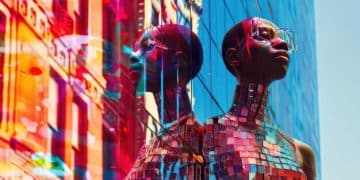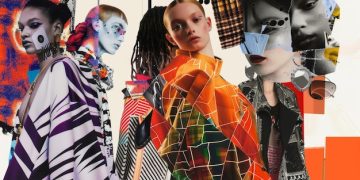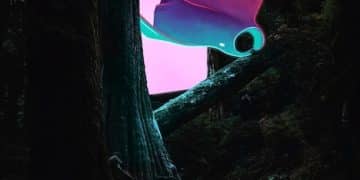Afrofuturism in the US: Race, Tech, and Imagination in 2025
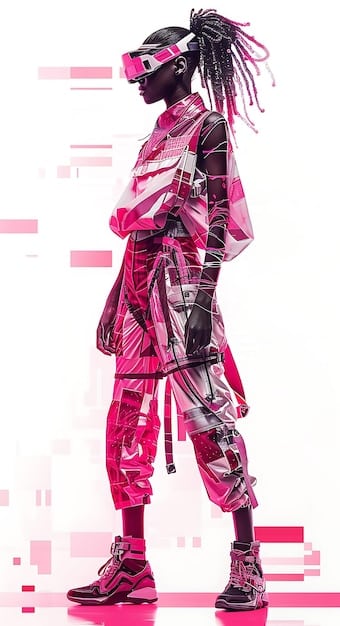
Afrofuturism in the US in 2025 examines the dynamic intersection of African American culture with technology and speculative fiction, envisioning futures shaped by Black perspectives, innovation, and liberation.
Afrofuturism in the US: Examining the Intersection of Race, Technology, and Imagination in 2025, is more than just a genre; it’s a cultural movement that reclaims narratives and envisions futures where Black people thrive.
What is Afrofuturism?
Afrofuturism blends science fiction, fantasy, and African culture to explore the Black experience. It offers a unique lens through which to view technology and the future.
At its core, Afrofuturism is a cultural and artistic movement that brings together elements of science fiction, fantasy, history, and Afrocentricity. It serves as a means of examining the past and reimagining the future through a Black cultural lens.
Key characteristics of Afrofuturism
Afrofuturism is characterized by distinct elements that provide a different view into the Black experience. Here are some things to think about:
- Reclaiming Identity: Afrofuturism seeks to reclaim and redefine Black identity by imagining futures where Black people are central figures and active agents of change.
- Incorporating Technology: This genre explores how technology can liberate and empower Black communities, providing opportunities for advancement and new forms of cultural expression.
- Cultural Roots: It draws inspiration from African mythology, history, and cultural traditions, celebrating the richness and diversity of the African diaspora.
Afrofuturism provides a platform for Black artists, writers, and thinkers to express their experiences and aspirations. By embracing speculative fiction and futuristic themes, Afrofuturism encourages creativity and innovation that can influence both art and technology.
The roots of Afrofuturism
The roots of Afrofuturism trace back to the mid-20th century, influenced by both racial struggles and technological advancements. Its development reflects a creative response to social injustice and a vision for a more inclusive world.
Afrofuturism didn’t emerge overnight; it evolved over decades, incorporating a range of influences. Understanding this history helps appreciate its depth and relevance.
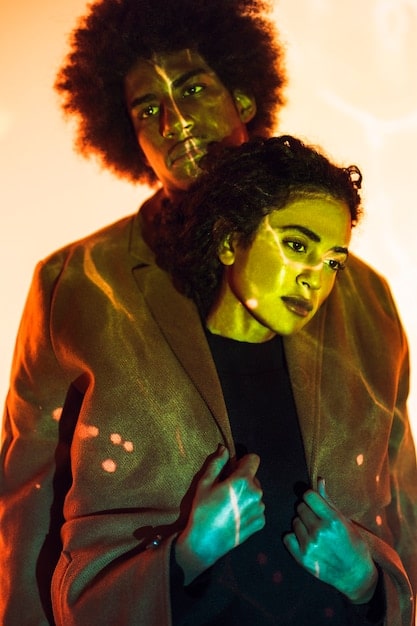
Influential Figures in Afrofuturism
Several key figures helped shape Afrofuturism, laying the groundwork for its growth and impact. These pioneers provided a vision and set of ideas for future artists and intellectuals to build upon.
- Octavia Butler: As a science fiction writer, Butler integrated themes of race, gender, and social justice, challenging readers to think critically about the future.
- Sun Ra: A jazz musician, Sun Ra used cosmic philosophy and theatrical performances to explore themes of identity and liberation.
- Samuel R. Delany: Delany is a science fiction author. His works tackle issues of race, sexuality, and power, pushing the boundaries of genre conventions.
Understanding these pioneers reveals the diverse expressions of Afrofuturism. Their influence paved the way for contemporary artists to explore complex themes and envision new realities.
Afrofuturism in art and music
Afrofuturism has significantly impacted art and music, fostering experimentation and cultural pride. These artistic expressions amplify Black voices and envision future possibilities.
In art, Afrofuturism is shown through visual elements and themes that integrate African diaspora aesthetics with technological and futuristic imagery.
Visual Arts
Artists incorporate vibrant colors, symbolic patterns, and diverse media to produce works that question conventional views of history and identity. Digital art, painting, and collage formats combine to illustrate narratives that cross timelines.
Afrofuturist music uses a sound that combines traditional African rhythms with electronic beats and surreal lyrics. Musicians use these elements to address themes of overcoming, freedom, and self-discovery.
Afrofuturism has influenced artists like Janelle Monáe, Flying Lotus, and visual artists such as Lina Iris Viktor, whose work explores identity, race, and technology. Musical and visual art productions explore themes of resilience, identity, and hope, appealing to a global audience.
Afrofuturism in literature and film
Literature and film showcase Afrofuturism as a powerful tool for storytelling and cultural critique. These mediums explore themes of identity, liberation, and the future from a Black perspective.
Afrofuturism provides writers and filmmakers with the means to create unique and compelling stories that challenge conventional narratives and provide insights into race, technology, and society.
Key Themes in Afrofuturist Literature
Afrofuturist literature typically explores several critical themes that resonate with audiences globally. These works deal with:
- Identity and Representation: Stories often focus on characters navigating issues of identity, questioning societal norms, and redefining the concept of Blackness.
- Technology and Liberation: These narratives investigate how technology can serve as a tool for liberation and empowerment against oppressive systems.
- Alternative Futures: Afrofuturist literature presents alternative future scenarios where Black people thrive, challenging stereotypical portrayals and biases.
Works such as “Black Panther,” “Parable of the Sower” (Octavia Butler), and “Space is the Place” (Sun Ra film), Afrofuturism in literature and film creates transformative experiences for audiences, encouraging critical thinking, cultural awareness, and imagination.
Afrofuturism in tech
Afrofuturism is impacting technology by promoting inclusive innovation. It brings ideas from Black culture and futuristic concepts together.
Embracing Afrofuturism in tech means thinking about new ways to solve problems, making sure Black voices are heard, and using technology as a tool to make society better.

How Afrofuturism Impacts Tech Development
Afrofuturism has a wide-ranging impact on technology development, influencing how companies and innovators approach their projects. Some key impacts include:
- Inclusivity and Diversity: Afrofuturism promotes diversity and inclusion discussions, ensuring that different perspectives are considered in tech design and development.
- Creative Problem-Solving: By incorporating imagination and cultural insights, Afrofuturism inspires new ways to approach problems and develop new technologies.
- Ethical AI and Design: Afrofuturism raises important questions about the moral implications of technology.
Afrofuturism’s influence can be seen in emerging technologies like virtual reality, cybersecurity, and artificial intelligence. By embracing these principles, the tech industry can create innovations that benefit all members of society.
Afrofuturism in the US in 2025
In 2025, Afrofuturism in the US continues to evolve. It influences various aspects of American culture, driving social change, and shaping technological advancements.
Afrofuturism continues to play an essential role in American society through 2025, inspiring change and providing hope for a better future.
Social and Cultural Impact
Afrofuturism helps change cultural narratives and promote social awareness, leaving a substantial mark on US society.
- Empowerment and Identity: Afrofuturism enables Black communities to reclaim their identities, overcome negative stereotypes, and strive toward a brighter future.
- Art and Expression: Music, literature, and visual arts continue to embrace Afrofuturistic themes, motivating creative expression and cultural preservation.
- Community and Education: Afrofuturism inspires community-based projects and educational programs, promoting values of justice and inclusivity.
Afrofuturism helps drive social and cultural dynamics by reimagining cultural norms and technological boundaries. As the movement matures, it has the potential to change society, technology, and cultural heritage in the United States.
| Key Point | Brief Description |
|---|---|
| 🚀 Reclaiming Identity | Redefining Black identity with Black people as central figures. |
| 💡 Incorporating Technology | Using technology to empower Black communities. |
| ✨ Cultural Roots | Inspired by African mythology and traditions. |
| 🎬 Artistic Expression | Amplifying Black voices in art, music, and film. |
FAQ
▼
The main goal of Afrofuturism is to reimagine the future through a Black cultural lens. It reclaims narratives, celebrates Black identity, and envisions futures where Black people thrive.
▼
Afrofuturism influences technology by promoting inclusivity and ethical AI. It inspires new solutions and guarantees that technological advancements reflect and benefit diverse communities.
▼
Key figures include Octavia Butler, Sun Ra, and Samuel R. Delany. These pioneers shaped Afrofuturism with their exploration of race, technology, and identity through speculative fiction and music.
▼
Afrofuturist literature explores themes such as identity, technology and liberation, and alternative futures. These stories challenge conventional narratives, envisioning worlds where Black people flourish.
▼
Afrofuturism in visual arts is reflected through vibrant colors and symbolic patterns. It uses digital art, painting, and collage to challenge historical perspectives and celebrate Black cultural heritage.
Conclusion
Afrofuturism continues to serve as a source of creativity and a critical lens for understanding the intersection of race, technology, and imagination in the United States. In 2025, it remains vital, contributing to social change and inspiring new generations to envision inclusive and empowered futures.
